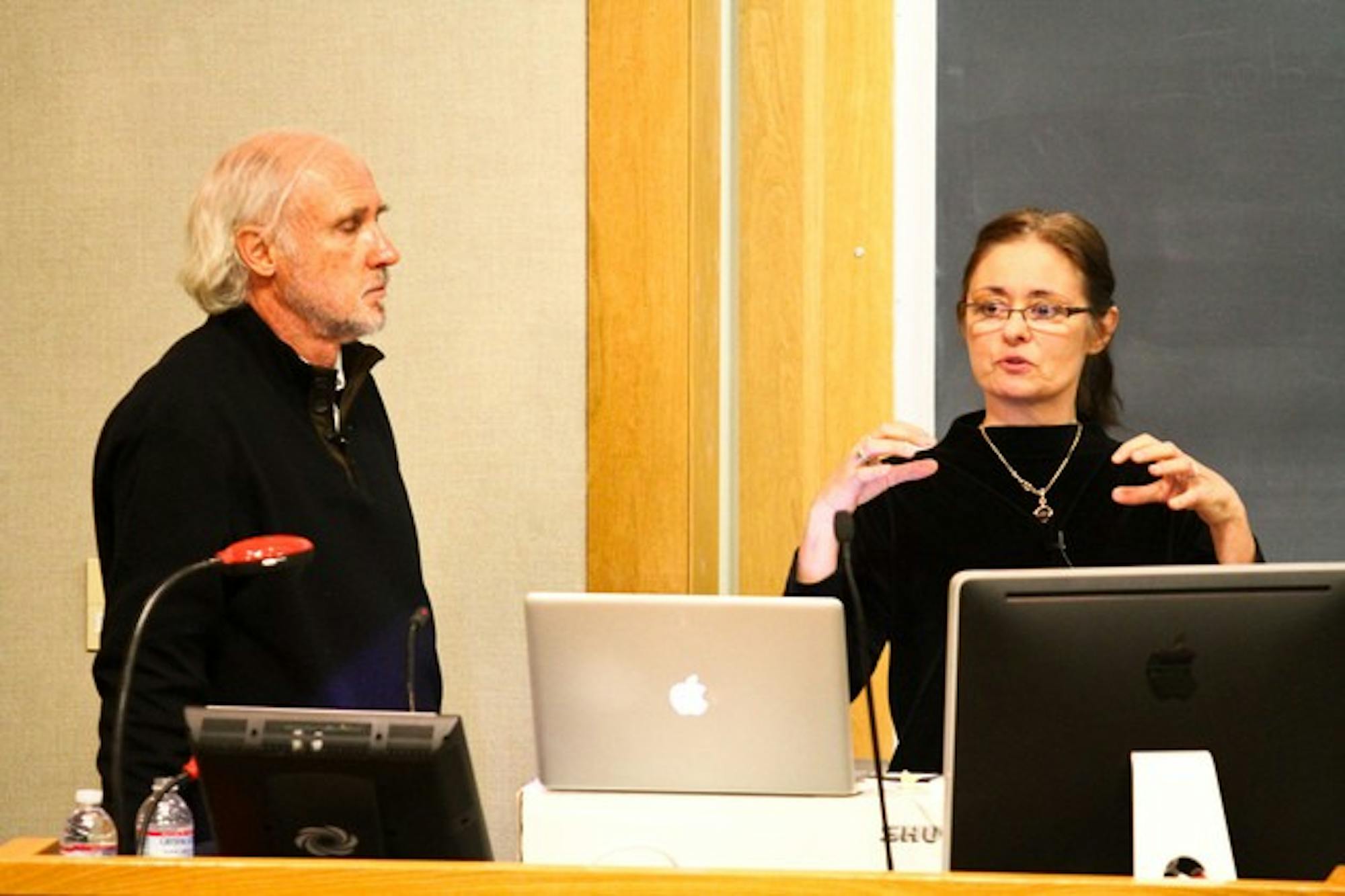The lecture drew from Menzel and D'Aluisio's latest books, "Hungry Planet: What the World Eats" (2007) and "What I Eat: Around the World in 80 Diets," released in August. Both books are photographic studies that supplement compelling photographs with written descriptions to represent the diets of families and individuals around the world.
"They say a picture is worth a thousand words. Well, I say a great picture has an eloquence really beyond words," John Butterly, a professor at Dartmouth Medical School, said in his introduction of Menzel and D'Aluisio.
Each of the 30 profiles included in "Hungry Planet" begins with a portrait of a family surrounded by all of the food they purchase and consume in one week. In the pages following each portrait, Menzel and D'Aluisio describe the culture in which each family resides and provide figures on weekly caloric intake and the amount of money spent on weekly groceries, among others.
"What I Eat" is similar to "Hungry Planet," but focuses on the daily diets of 80 individuals from 30 countries. Menzel takes the photographic angle of each person's dietary story while D'Aluisio provides written portraits of their daily routines and eating habits. The profiles are presented in order of caloric intake, beginning with a Kenyan woman's 800-calorie diet during famine, to a recovering methamphetamine addict's 12,000-calorie binge.
"A lot of people think that once we take the picture, we're done," D'Aluisio said. "That's only the beginning. Then we have to understand the culture the food culture, the diet."
From the Tibetan Yak herder to the Spanish bullfighter from the Indian Hindu mystic to the Sudanese refugee in Chad from the model in New York to the Pima Indian in Mexico, each individual's diet was influenced by economic and cultural factors, as well as education, the authors found.
Although Menzel and D'Aluisio tried to let people's stories speak for themselves, they said, it was difficult for them to avoid drawing their own conclusions. They said they were particularly interested in the how people from countries of varying wealth regarded their food. Those that consumed the fewest calories as well as the least amount of processed foods were generally more aware of their food's nutritional value and cost. Many from the developed world, however, had the opposite reaction when presented with their weekly intake.
"Usually those in the developed world expressed shock and dismay to see what they were eating in one week's time," D'Aluisio said.
Menzel and D'Aluisio suggested this may be because people in the developing world are forced to think more strategically about what they eat due to economic factors. Whereas 60 to 80 percent of the income of a family from a developing country is spent on food, only 20 percent of the income of a family from the non-developing world is set aside for groceries.
"But what is that 20 percent spent on?" D'Aluisio asked.
Menzel said that even in the developed world, many people never have the economic stability to be able to consider what is in the packaged food they are eating. He went on to tell a story about a nurse and mother in Mexico who said she didn't think stores would sell Coca-Cola if there wasn't something healthy in it. D'Aluisio then talked about a truck driver from the United States who attempted to integrate fresh vegetables into his diet but reverted to what he called "normal food" packaged, highly-processed food because healthy food was too expensive.
The pair was also intrigued by the contradictory needs of people from developed and developing countries.
"It's interesting to watch people in the Western world have trouble bringing physical activity back into their lives, while in the developing world, the earth has to be tilled and tended to in order to bring food back to the family," Menzel said.
Lebanon High School seniors who attended the lecture with their environmental science class observed the paradox of processed foods in developed and developing countries.
"I was surprised to see how American processed food has infiltrated other countries," Lucy Bergwall, a senior at Lebanon High School, said after the lecture. "In the Upper Valley, we're trying to return to our roots [naturally grown food]. Only now are we realizing that we need to revert. We need to prevent the spread of processed food to developing countries."
In the question and answer part of the program, Menzel and D'Aluisio talked about a similar lecture they gave as keynote speakers to a group of executives at Kraft, including the CEO.
"We won't change our lectures for anyone, no matter how much they are willing to pay us," D'Aluisio said. "But the first question that we got after our presentation from those businessmen was, How do we get into those [impoverished] markets?' Peter and I just turned and looked at each other."
Menzel an award winning photographer whose portraits have been featured in magazines such as Life, Time and National Geographic and D'Aluisio, a television news producer turned journalist, have authored several other books on other topics, according to their website.




